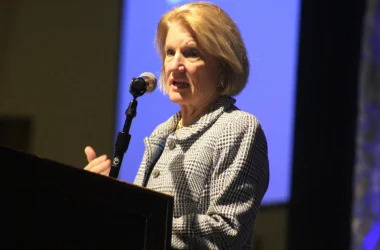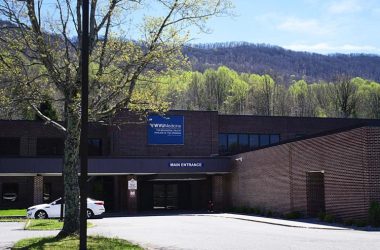By CONOR GRIFFITH
The State Journal
PITTSBURGH, Pa. — A panel comprised of representatives from a variety of backgrounds shared their views regarding the potential of Appalachia’s natural gas reserves during the Shale Insight conference last month.
Steve Hedrick, president and CEO of South Charleston-based Mid-Atlantic Technology, Research & Innovation Center, said a major potential driver for the region is the Appalachian Storage and Trade Hub in which natural gas will be stored underground in a liquid form for distribution to other plants and facilities.
Hedrick called the multi-billion and multi-phase project ‘a catalyst to the petrochemical industry’ that, through downstream development, would create 100,000 well paying full time jobs generating $6 billion in annual payrolls and $2.9 billion in tax revenue.
Another of the panelists, Doug Grubb, is the facilities operations senior director for Geisinger Health in Danville, Pennsylvania.
Since building a combined heating and power (CHP) fueled by natural gas, Grubb said Geisinger’s campus has noted less waste, more efficiency and lower costs than getting energy from the local power plant. The medical center saved $2.1 million a year after the CHP was put in and $2.5 million the year after that.
What’s more, he said a natural gas system results in improved public health due to the cleaner air, which equates to fewer hospital visits, cases of premature death, asthma attacks and respiratory symptoms. He said hospitals are ideal for using CHP systems due to their 24/7 operation and high heat load even during the summer.
“Our mission is to improve the health of our communities,” Grubb said. “In terms of public health, we’re going in the right direction.”
Don Kiel, executive director for the SEDA-COG Natural Gas Cooperative, noted that, while much of Pennsylvania heats its homes with gas (75 percent in some places), there is a bubble of counties in the center of the state in which that number hovers at only about 10 percent.
Locations like this, he said, are prime grounds for public-private partnerships in which stakeholders can band together to acquire grants, loans and other funding to overcome the hurdle of installing shale-oriented infrastructures.
Hedrick said one of these is images. To the world at large, he said, Appalachia isn’t viewed in the same light as other natural gas hot spots even though the region contributed many milestones in the industry, such as the first commercial ethance cracker which was built in Clendenin.
Another hurdle, he said, is the low price of raw materials. That coupled with low demand equates to a lack of predictability which can make attracting investment more difficult.
Denise Brinley, senior energy advisor for the Pennsylvania Department of Community and Economic Development, said the task now is to change the tide of investment, to encourage venturing into untested ground. She called upon universities, companies and governments to work together in this venture.
“We cannot sit on the third largest basin in the world and not use it,” she said. “The wind is not at our backs and it’s going to take a concerted effort for Pennsylvania, Ohio and West Virginia to extract what they should.”
See more from The State Journal




